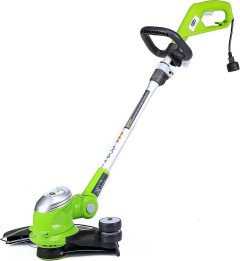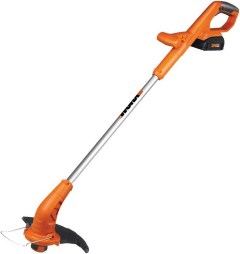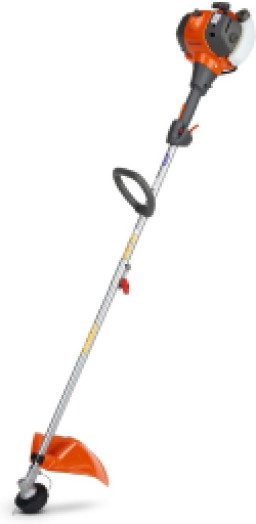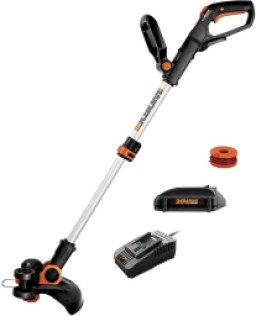Buying guide for Best weed eaters
Weed eaters put the finishing touches on a great looking yard. They keep the weeds and brush under control while saving you from a backache. Whether you need a weed eater for general yard and garden duties or for more serious landscape management, it’s important that you have the right machine for the job.
There are hundreds of weed eaters available on the consumer market, so how do you tell which one is right for you? It can be tough to sort the wheat from the chaff.
If you’re ready to shop for your weed eater, check out our recommendations in the product list above. For more information on comparing weed eaters and selecting yours, continue on and enjoy our product guide.
Weed eaters are powered by gas, electricity, or battery power. In our buying guides, we note the pros and cons of each and explain how each option fits different consumers’ needs.
We assess how easy or difficult a weed eater is to maneuver, which is an important consideration for many consumers. We want to know if it’s heavy or lightweight and if it feels balanced during operation.
While corded and cordless models are suitable for small to midsize yards, gas-powered tools offer more power for heavy-duty tasks. We take yard size and job size into account when researching products.
We factor in weight, exhaust, and noise levels when we evaluate gas weed eaters.
Weed eaters are available at various price points, ranging from around $50 to $200+. Inexpensive models are suitable for small yards and limited jobs, while pricier options are more powerful and have more features. We help our readers find the best option for their needs and budget.
A weed eater with a rotating head doubles as an edger that makes it easy to trim around sidewalks and walkways. This is a feature we look for in our research.
We evaluate the three types of string feed options: auto feed, fixed line, and bump feed. We note how each system works to deliver string during lawn-trimming tasks.
Each weed eater has a curved or straight shaft. We analyze shaft design, leverage, and maneuverability when assessing each tool.
When we research weed eaters, we want to know the power of each model we consider. Popular options we evaluate include 2-stroke and 4-stroke engines.
Battery performance is a concern consumers have about cordless models. We make note of charge time and battery life when conducting our research.
Weed eater considerations
Power
Weed eaters are categorized by the type of power they use, namely:
- Gas
- Battery
- Corded electric
For a few weeds in a small yard, a corded electric weed eater should take care of most of your needs. Lightweight and easy to handle, this type of weed eater is meant for occasional use. They also don’t make as much noise as a gas-powered weed eater.
EXPERT CONSULTANT
Luke owned and operated his own lawn and landscaping business for over a decade. Founding the business and growing it prior to an acquisition, Luke led all procurement decisions, from the purchase of blowers and lawn mowers to weed whackers and tillers. Luke uses all of these machines regularly.
Luke
Landscaping Professional
Battery life is an issue for battery-powered weed eaters. However, newer lithium-ion (Li-ion) models can last an hour or more. Keep in mind that to get that kind of battery power, the battery is large and weighs almost as much as a gas-powered weed eater. The batteries are often interchangeable with other power tools made by the same brand.
Tall weeds and thick brush require something with more power than most corded or battery-powered weed eaters offer. Gas-powered weed eaters may be heavier, but they can make quick work of tall weeds. Some come with a steel brush cutter head that can cut through thick brush as well. Before purchasing, consider that they are noisier, give off exhaust, and may require a shoulder strap to be used for extended periods of time.
Ergonomics
A good weed eater should feel balanced and comfortable in your hand. Weight should be evenly distributed from top to bottom, with some machines having a bit more weight at the top.
All machines vibrate to some extent, but the best compensate with some form of damping to reduce fatigue.
Lightweight models might only need a top-mounted handle for firm control, but larger, gas-powered machines will require a shoulder harness if you plan to work for extended periods of time.
Purpose and performance
The kind of weed eater you need will, to a large extent, depend on the land area you have, and what you want to do with it. Small yards don’t require the same maintenance as large plots of land. Homeowners with small yards and few weeds would do well to save the money; find a good corded or battery-powered weed eater.
However, you may find that you have an occasional need for something with more power to cut down brush or tall weeds. Another possibility is a weed eater with a swivel head, one that can double as an edger. Consider whether it’s worth paying a bit extra for a machine that can handle anything you throw at it, even if you'll only need the extra power or features occasionally.
For those with large yards or extensive property, a gas-powered weed eater would be a good choice, as these can quickly cut through tough weeds and brush.
Did you know?
Most weed eaters emit enough decibels to warrant using ear protection.
STAFF
BestReviews
Weed eater features
Weed eaters are simple machines, so small features like spool type, power-saving devices, and easy-start systems can make a big difference. We'll look at what you get with each and whether it's worth the money for the type of work you want to do.
Start and stop aids
Getting a weed eater started can be half the battle of removing weeds from your yard. A spring-assisted starter makes pulling the cord easier on a gas-powered model. A primer bulb that engages the choke before starting also assists start up.
For all types of weed eaters, a stop button or switch within easy reach lets you quickly stop the motor at any time. It’s not only convenient, but a safety issue as well.
String feed options
The string, or cutting line, can be fed in one of three different ways:
Puts out more line when the head of the weed eater is bumped against the ground.
A fixed amount of line is fit into the head and must be changed manually when the line gets worn down, which happens frequently.
A pre-wound head that automatically feeds line as required.
Shaft and head
A weed eater with a straight shaft has more power and durability, making them ideal for cutting difficult areas over large plots of land. They also have a longer reach.
Curved shafts are usually easier to handle and are more user-friendly.
Some models have a rotating head that allows them to be used as an edger as well. This can eliminate the need for a second tool, and let you get two jobs done at once.
Expert Tip
It’s better to use slower speeds when trimming, especially if you are a novice. Slow speeds help you hold your weed eater steady and maintain an even line.
STAFF
BestReviews
Weed eater prices
For under $50, you should be able to find a basic battery-powered or corded weed eater with no frills. For a very small yard that only needs a weed eater a few times a year, this might not be a bad choice. However, be aware that weed eaters in this price range cannot handle prolonged use. Batteries may last less than two hours and corded weed eaters may only have the power to handle grass and small weeds.
At $50 to $100, the choices and quality go up significantly. Lithium-ion batteries power many models in this price range. These weed eaters do a good job on small weeds and small to mid-size yards, but most batteries don’t last longer than 45 to 60 minutes before they need to be recharged. They are not meant for prolonged use.
Between $100 and $200 is where you’ll find two-stroke, weed eater/edger combinations. They’ll be either battery- or gas-powered. Reliability and durability increase in this price range. These models can cut through tall weeds and some brush.
Above $200 you can find both two- and four-stroke engines, some professional grade, capable of taking on the toughest of weeds and brush. These heavy duty machines can be run for extended periods of time without overheating or slowing down, except to occasionally replace the string.
Tips and tricks
Always wear safety equipment – goggles, mask, gloves, and covered shoes – when using a weed eater.
Whether your weed eater comes with a shoulder harness or an adjustable handle, be sure to fit it to your height before using the machine.
Weed eaters can be noisy, and can produce some pretty strong vibrations. Prolonged exposure to such noise and vibrations can cause circulatory damage. It is advised to use them for short blocks of time, with periodic breaks in between.
When replacing the trimmer line in a string weed eater, go strictly by what the manual recommends. Avoid any form of substitution, as that might damage the machine or cause accidents.
Check your manual for the size line your weed eater requires. Line that is too thin can reduce cutting power, while line that is too thick can damage the motor.























































